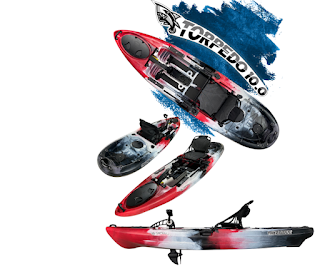Fish Life Cycle
Fishing is commonly known to amplify variances in designated populaces. These vacillations are related to populace shifts towards youthful, little, and all the more rapidly developing people. Nonetheless, the presence and nature of the unthinking reason for these relationships and their potential environmental impacts remain exceptionally questionable. Here, we clarify this premise and related effects by showing how fishing can expand vacillations in fishes and their biological system, especially when combined with diminishing body measures and propelling development normal for the life-history changes instigated by fishing. All the more explicitly, utilizing an observationally defined organization model of a very much concentrated on lake biological system, we show how fishing may both increment vacillations in fish overflows and furthermore, when joined by diminishing body size of grown-ups, further lessening fish overflow and increment worldly inconstancy of fishes' food assets and their environment. Conversely, progressed development has moderately little impact but to build changeability in adolescent populaces or fishing equipment. Our discoveries delineate how various instruments' hidden life-history changes that might emerge as transformative reactions to concentrated, size-particular fishing can quickly and constantly undermine and debase biological systems even in the wake of fishing has stopped. This examination assists better with anticipating how life-history changes might decrease fishes' versatility to fishing and biological systems' protection from ecological varieties.
The hole in information on the biology of spiked lobster
populaces should be satisfied and an unmistakable comprehension of the
variables affecting enlistment is vital for legitimate fisheries executives. A few nations, for example, Australia, New Zealand, United States,
Mexico, Japan, India, and Cuba have fostered a puerulus settlement observing
system to foresee enrollment and fishery execution (Phillips and Booth, 1994;
Cruz and Bertelsen, 2009; Forman et al., 2013; Plagányi et al., 2018). The
program in New Zealand shows huge connections between's the degree of
settlement and the fishery get per unit exertion for most fishery regions
(Forman et al., 2013). In addition, the puerulus settlement record from Bicheno,
on the upper east shore of Tasmania is altogether related to business get
rates, with a slack of 5 years (Gardner et al., 2001). In Seychelles, a
puerulus settlement record could make a significant commitment to the
reasonable administration of lobster fisheries by giving the progressed signs of
vacillations in enrollment and for the possible advancement of a mariculture
industry. Barbed lobster mariculture is very much evolved in Indonesia, Vietnam, and Australia. In Indonesia and Vietnam, lobster cultivating uses the wild
populaces for seed. Without appropriate information on the inconstancy of
puerile settlement, the yearly expulsion of 1-2 million puerile by fishers in
Vietnam can fundamentally affect the demography of the species, especially that
of grown-up populaces (Jones et al., 2010). Then again, Australia has as of now
followed the way of sharp lobster hydroponics free of wild populaces, including
incubation facility creation from first egg preparation (IMAS, 2019).
Notwithstanding, this sort of mass hydroponics creation requires a high interest
in innovation advancement, foundation, and limit building. In an evolving sea,
temperature fluctuation can influence all pieces of the spiked lobster life
cycle and its coral reef natural surroundings, especially during atypical
conditions related to El Niño occasions (Harris et al., 2014; Gudka et al.,
2018). In this unique situation, in situ temperature information ought to be
considered as an administration marker. This pointer can help the maintainability
of the fisheries by remembering the climatic inconstancy for its the board and
loss of related coral reef living space.


Comments
Post a Comment